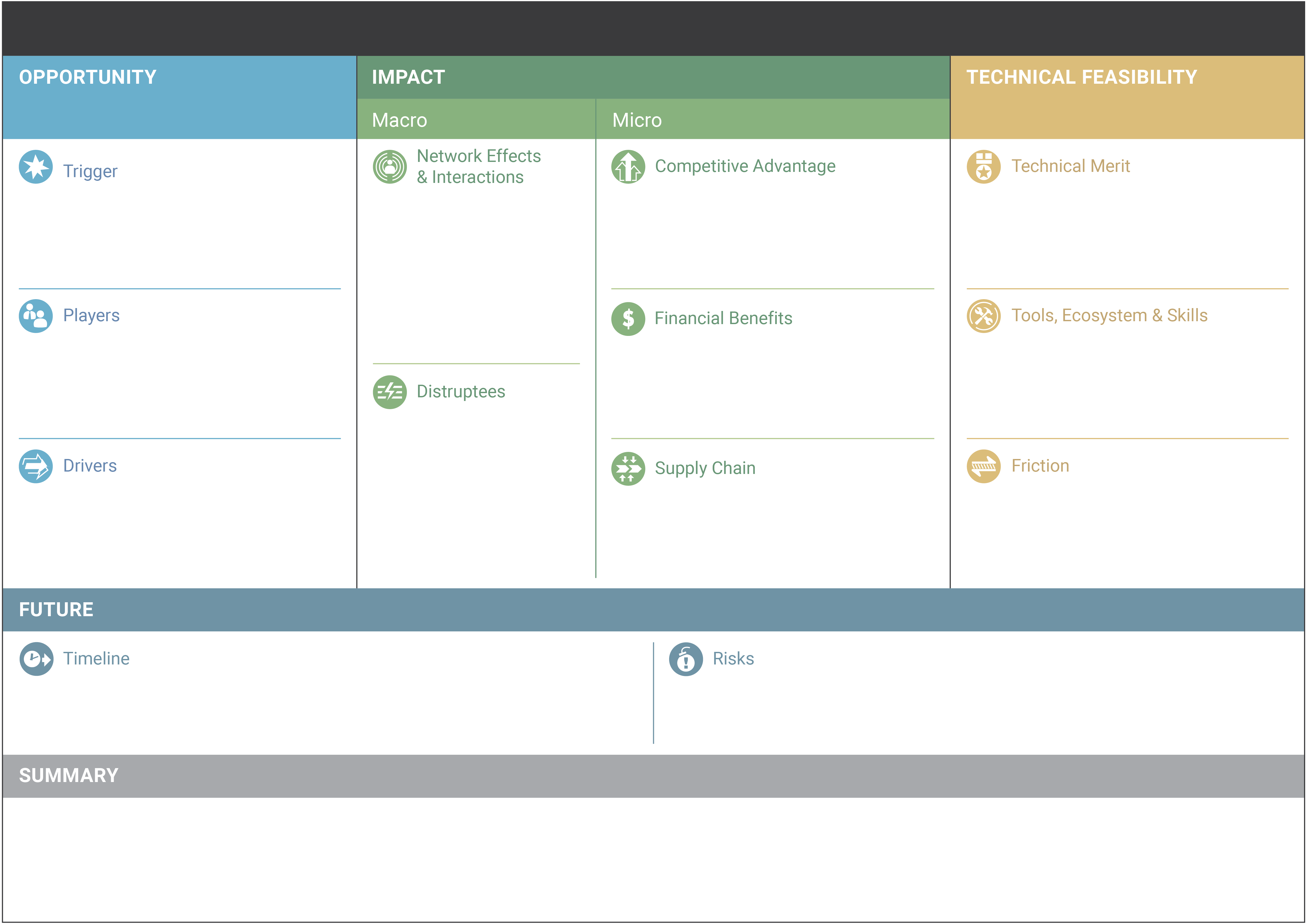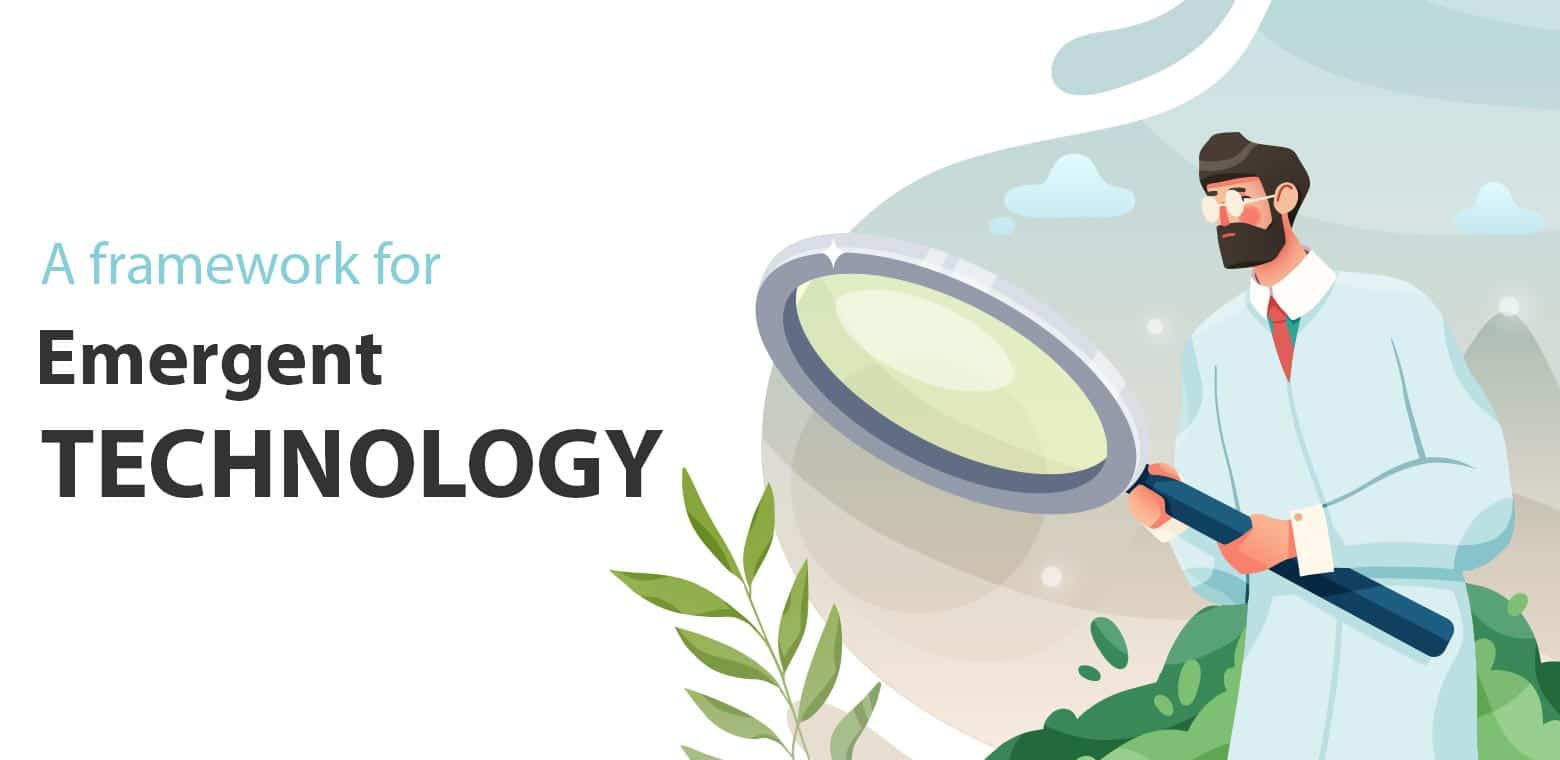Emerging technologies introduce challenges and threats to existing organisational competitive advantages, as well as presenting opportunities for organisations to take the lead in completely new areas, long before the competition takes root.
The need to monitor the technological horizon is vitally important. Emerging technology represents a series of potential investments that can have a serious impact on the business. Assessing the technology landscape, making the smart decisions and advocating for the right technology will help secure the organisation’s future.
However, not all emerging technologies are relevant, and not all live up to their promises. In order to choose the right technology for your business, practitioners must evaluate new technologies for their impact, relevance and probability of success. Whether you choose to adopt or ignore a new piece of technology, the wrong choice can be costly.
Each year, organisations of all sizes measure, analyse and plan where they’re investing in technology, however there is still no widely accepted framework for analysing and evaluating emerging technology.
Why businesses need a framework for assessing new technology
- Utilising a framework as a shared understanding, it becomes much easier to discuss technology analysis with customers and other members of the organisation
- A framework as a shared understanding enables and simplifies communication and education around technology. A framework not only helps you educate someone on a piece of technology, but makes it much easier to learn about technology from others
- The sharing of information around technology analysis between teams and departments becomes simplified, easier to understand and more efficient
- A framework helps to identify which aspects of a piece of technology can be included or left out, depending on its application and relevance
- The framework itself can be improved over time and collect inputs from relevant practitioners
The Emerging Technology Analysis Canvas
Similar to Alexander Osterwalder’s Business Model Canvas, the ETAC (Emerging Technology Analysis Canvas) is a framework designed to address the need for emerging technologies.
The ETAC is based on a set of questions arranged around a logical narrative that probe technology.
Emerging technology must fulfil four conditions:
- The identification of a problem and related innovation that addresses the problem, in this case called a trigger. (We consider that both the problem and innovation must come in conjunction because often the innovation changes our perception of the problem).
- The technology needs to have a significant potential impact. Often the impact may extend beyond the initial problem.
- The technology has to be feasible given the available resources.
- The technology has to navigate risks related to technology development and adoption. For example, the technology must develop and be adopted quickly enough to justify any investment.
The ETAC is structured around these 4 elements (Opportunity, Impact, Technical Feasibility and Future) and drills down into the details in each subsection.

Source: https://github.com/wso2/ETAC/blob/master/ETAC.md
Opportunity
- Trigger: A problem and a solution that captured broader imagination that later evolved to a broader technology promising to solve broader problems.
- Players: Organisations or individuals who are actively improving or using the technology to solve problems. For example, Amazon, Microsoft, and IBM are active players in serverless. We do not include the end users of the technology as players. Instead these are discussed under the value chain.
- Drivers: external forces that positively impact the technology such as legislation. For this analysis, one can use the PESTLE framework [10] which considers the political, economic, socio-cultural, technological, legal, and environmental impacts on a technology. Among examples of drivers are cost saving, agility, productivity, automation, communication, trust, privacy, government policy, and law. Also, current industries and other emerging technologies can also act as drivers.
Impact
It is important to note that impact is analysed with respect to potential future and not limited to the current state of the technology.
Macro Impact
This discusses the impact on the industry under the following three themes.
- Network effects and Interactions: A technology has network effects if the increased adoption increase the technology’s value for existing users thus creating a positive feedback loop.
- Distruptees: – What technologies or industries will be affected by the emerging technology? The effects are twofold: the industries that compete with the emerging technology will be challenged, while the industries that complement it will be propelled. For example, AI may improve disease diagnosis, but at the same time that will reduce jobs for doctors. Some of the effects may be disruptive, where the affected technology or domain is significantly transformed by the technology. Furthermore, there are several impact areas we can consider. For example, we can use the PESTLE framework [10] in reverse and consider the political, economic, socio-cultural, technological, legal, and environmental impacts of the technology. We need to consider not only the first level effects but also the nth level effects as described by [7]. Furthermore, it is important to consider the crossover potentials of the technology where it can solve fundamental problems in a different industry or a segment, which in turn unlocks a wave of advance. An example of this is blockchain, where a technology designed to solve problems of decentralised money is being applied to areas such as identity, provenance or smart contracts in many industries.
Micro Impact
This discusses the impact on the organisation under the following four themes.
- Competitive Advantage: how does the emerging technology affect competition between organisations? For example, AI enables organisations to automate decisions and make better decisions, thereby helping them out-compete their competitors.
- Financial Benefits: How would the technology affect the bottom line of organisations. The benefits come in two forms. The technology might make the organisation efficient saving some costs or the technology might enable new revenue sources. For example, AI is being used to automate expensive human tasks, thus reducing costs significantly.
- Supply Chain: this represent activities that are carried out starting from raw materials and skills until the product or a service is delivered and consumed by the end user. This section discussed how the technology affects the supply chain.
Feasibility
- Technical Merit – This discusses technology breakthroughs the technology has made as well as any technical limitations. For example, AI has achieved several breakthroughs such as deep learning, which has helped in surpassing human accuracy with many problems. However, there are multiple technical challenges including algorithmic attacks, the need for expert knowledge while tuning and applying the AI, and the significant time required for data cleanup.
- Tools, Ecosystem, & Skills – This discuss the availability of required skills, tools and best practices, and a community. An example of a community is an open source user forum. As the technology matures, tools and ecosystems will get better, which improve the odds of success. For example, blockchains have built a healthy developer community and tools.
- Friction – What kind of friction will the emerging technology face in its deployment? Here we only consider technical friction, and nontechnical considerations are discussed under Risks. As an example, blockchains are seeing concerns over the transaction rates and power consumption costs.
Future
- Timeline: What are the key possible milestones in the technology development? For example, how long will it take for the core technology to be ready? How fast will the adoption be? For example, blockchains may need further breakthroughs before they are adopted widely and it might take at least 5-10 years to reach those milestones.
- Risks: What are risks that might limit the technology deployment? This includes non-technical risks as well. We can think of these as the inverse of drivers. Just like with drivers, we can use the PESTLE framework [10] in reverse to find drivers. An example of a risk is that regulators may restrict blockchains based on taxes or money laundering legislation, even when those blockchains are designed to resolve other aspects than digital cash. Among other risks to be considered are the need for standards, privacy concerns, business models, current law and policy frameworks, lack of skills, complexity, security risks, monopoly and vendor lock-in.
Summary
The summary section discusses possible technology development and deployment scenarios while weighing other parts of the ETAC. In the opportunity section, we discussed drivers. In the impact and feasibility sections we explore the potential of the technology and technical reality. The future section discusses risks and potential key milestones. The summary section explores the tension between the potential of the technology and environment in which it has to operate to understand potential scenarios and associated likelihoods.


